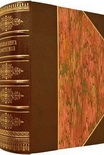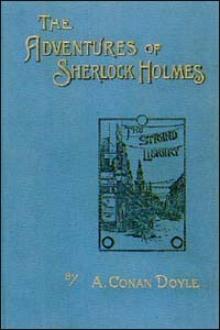My Autobiography, Charles Chaplin [books to read in your 20s .TXT] 📗

- Author: Charles Chaplin
Book online «My Autobiography, Charles Chaplin [books to read in your 20s .TXT] 📗». Author Charles Chaplin
Then a most incredible thing happened. Suddenly in the middle of the laughter the picture was turned off! The house lights went up and a voice over a loud-speaker announced: ‘Before continuing further with this wonderful comedy, we would like to take five minutes of your time and point out to you the merits of this beautiful new theatre.’ I could not believe my ears. I went mad. I leaped from my seat and raced up the aisle: ‘Where’s that stupid son of a bitch of a manager? I’ll kill him!’
The audience were with me and began stamping their feet and applauding as the idiot went on speaking about the beautiful appointments of the theatre. However, he soon stopped when the audience began booing. It took a reel before the laughter got back into its stride. Under the circumstances I thought the picture went well. During the final scene I noticed Einstein wiping his eyes – further evidence that scientists are incurable sentimentalists.
The following day I left for New York without, waiting for the reviews, for I would get there only four days before the opening. When I arrived, to my horror I discovered that hardly any publicity had been given the picture other than a perfunctory ad announcing: ‘Our old friend is with us again,’ and other feeble phrases. So I read the riot act to our United Artists staff: ‘Never mind the sentiment, give them information; we are opening in a non-movie house that’s off the beaten track.’
I took half-page advertisements, staggering them each day in the most prominent New York newspapers, announcing in the same size letters:
CHARLES CHAPLIN
AT THE COHAN THEATRE
IN
CITY LIGHTS
CONTINUOUS ALL DAY AT 50 CENTS AND ONE DOLLAR
I spent $30,000 extra with the newspapers, then rented an electric sign for the front of the theatre costing another $30,000. As there was little time and we had to hustle, I was up all night, experimenting with projection of the film, deciding size of picture and correcting distortion. The next day I met the Press and told them the whys and wherefores of my making a silent picture.
The United Artists staff were doubtful about my admission prices because I was charging one dollar top and fifty cents, whereas all the important first-run cinemas only charged eighty-five cents top down to thirty-five cents – and with talkies and a live show to boot. My psychology rested on the eminent fact that it was a silent film and that called for raising the prices, and that if the public wanted to see the picture the difference between eighty-five cents and one dollar would not stop them. So I refused to compromise.
At the première the picture went off very well. But premières are not indicative. It was the ordinary public that would count. Would they be interested in a silent picture? These thoughts kept me awake half the night. In the morning, however, I was awakened by my publicity man, who came bursting into my bedroom at eleven o’clock, shrieking with excitement: ‘Boy, you’ve done it! What a hit! There’s been a line running round the block ever since ten o’clock this morning and it’s stopping the traffic. There are about ten cops trying to keep order. They’re fighting to get in. And you should hear them yell!’
A happy, relaxed feeling stole over me and I ordered breakfast and dressed. ‘Tell me where the biggest laughs were,’ I said. And he gave a minute description of where they laughed, belly-laughed and yelled. ‘Come and see for yourself,’ he said; ‘it’ll do your heart good.’
I was reluctant to go, for nothing could live up to his enthusiasm. However, I saw half an hour of it, standing with the crowds at the back of the theatre, in the midst of happy intensity relieved continuously by sudden outbursts of laughter. That was enough. I came away satisfied and gave vent to my feelings by walking all over New York for four hours. At intervals I passed the theatre and saw the long unbroken line that went round the block. The picture also received unanimous rave reviews.
In a 1150-seat house we took in $80,000 a week for three weeks. The Paramount directly opposite, with 3,000 seats, showing a talkie and with Maurice Chevalier in person, took in only $38,000 the same week. City Lights stayed twelve weeks, making a net profit, after all expenses, of over $400,000. The only reason it was taken off was because of the request of the New York theatre circuits, which had booked the picture at a very good price and did not want to have it played out before it reached their circuits.
Now I intended to go to London and launch City Lights there. While in New York I saw a lot of my friend Ralph Barton, one of the editors of the New Yorker, who had just illustrated a new edition of Balzac’s Droll Stories. Ralph was only thirty-seven years old, a highly civilized and eccentric fellow who had been married five times. He had been depressed of late and had attempted suicide by taking an overdose of something. I suggested that he should come to Europe as my guest, that the change would do him good. So the two of us set off on the Olympic – the same boat on which I had travelled to England on the first trip.
twenty-two
AFTER ten years, I was sensitive as to what my reception would be in London. I would rather have stolen in quietly without any fuss.





Comments (0)